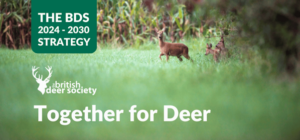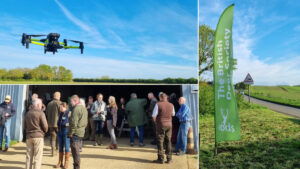ABOUT THE STUDY
Whitehead Trust Studentship – Menno de Jong
Most British deer have been impacted by population bottlenecks during introductions (or in the case of roe and fallow deer, reintroductions).
The implications for long-term survival and adaptation to local habitat are poorly understood, but theoretically selection is a weak force when population sizes are small.
At the same time, founder events are an important process in evolution, and founder groups evidently adapt to their new environment. This study will focus on understanding the relative importance of stochastic factors and natural selection for founder populations introduced to a new habitat.
In the UK there are several species that originated in quite distinct habitat in Asia (sika, muntjac and Chinese water deer) or were re-introduced from Europe (roe and fallow deer) and started as small founder groups in the UK. Next generation sequencing methods will be used to assess evidence for changes associated with both selection and genetic drift. The focus will be on two species – roe deer, building on earlier work* (funded by the Whitehead Trust) that identified population structure, the impact of local founder events, and the source of historical introductions, and reindeer introduced to the British overseas territory of South Georgia in the South Atlantic.
The latter case study will be included especially due to the excellent database available providing samples from the original population in Norway and the introduced population on South Georgia, and good historical data on the numbers introduced, the timing, and the demographics of the founder population since introduction.
It is expected that these studies will provide valuable transferable inference about the potential for deer species to adapt to local habitat in spite of small founder population size for all introduced species of deer in the UK. This information is relevant to the long-term survival and management of these species.
*This builds on Dr Karis Baker’s work in an importantly different direction: what are the consequences for individual and population development of moving a limited number of deer into deer-free environments? This has implications for pure evolutionary ecology and conservation management.
FURTHER READING

Together for Deer – New BDS Strategy Launched
We unveiled our new strategy, “Together for Deer,”. The strategy emphasises evidence-based approaches and collaboration among stakeholders. It focuses on Ethics & Welfare, Education & Training, and Science & Research, aiming to establish BDS as a leading authority in deer welfare and management by 2030. “Together for Deer” aims to unite efforts in safeguarding deer welfare amid complex challenges.

BDS Launches First Drone Survey Thanks to Supportive Members
We are thrilled to announce a groundbreaking moment for the BDS community: the successful launch of our first drone survey funded by last year’s award-winning Big Give campaign. This achievement has been made possible through the unwavering support and contributions of our dedicated members and supporters.

Responsible Deer Management Clear Up
This article stresses responsible deer management, especially in disposing of deer carcasses after incidents like Deer Vehicle Collisions (DVCs) and humane dispatch. It highlights the need to ensure public safety and sensitivity by properly handling carcasses and following best practices.










